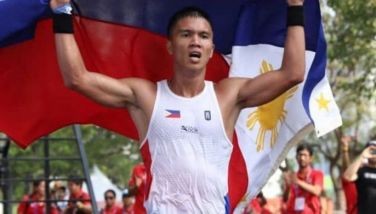Ninoy: More than a martyr

There is an old Latin saying: “Dulce et decorum est pro patria mori.” This roughly translates into English as, “It is a sweet and beautiful thing to die for one’s country.”
Martyrdom usually refers to someone who dies in the name of their religion. History is full of stories about Christian martyrs, such as the Korean martyrs recently beatified by Pope Francis in his recent trip. But the act of martyrdom is also used to refer to those who offer their lives for their country, or as the ancient expression goes, “pro patria mori” or to die for one’s homeland.
History can reveal stories of thousands or millions who have offered their lives for their country. Think of soldiers and civilians who died in defense of their country or for a cause. Then there are those who became martyrs unknown even to family and friends. There are martyrs who died in vain.
But throughout history, there are the few whose martyrdom changed the course of the history of their nation, their people and even, at times, the history of mankind.
Mahatma Gandhi was the national figure in India’s struggle for independence and became the inspirational symbol for non-violence wielded as a revolutionary weapon instead of armed struggle. He was assassinated as he desperately tried to use his moral force to maintain India – divided by Hindu and Muslim struggles – as one nation. Martin Luther King, whose willingness to go to jail and whose inspiring rhetoric became the primary force for the Civil Rights movement in the United States, is another such martyr.
In Philippine history, there is the sacrifice of Jose Rizal whose martyrdom ignited the Philippine War for Independence. Less known is the martyrdom of Jose Abad Santos, Chief Justice of the Supreme Court during the Philippine Commonwealth period. He was executed by the Japanese during the Second World War.
Abad Santos was killed because he refused to undertake pro-Japanese propaganda, to take the oath of allegiance to Japan, to cooperate with the enemy, and to reveal the instructions President Quezon had given him.
Under what conditions then does a victim become a martyr – someone whose suffering and sacrifice is so widely and acutely felt to be an injustice that it triggers a widespread, people’s movement which then destroys those conditions that led to the injustice? According to studies by Charles Sanders Pierce and Andy Blunden, there are several things necessary.
First, the martyr must be an icon. He or she must be someone the people can recognize and identify with. “If it can happen to Ninoy, it can happen to any of us.” But the martyr must also be an inspiring person — someone in whom people identify what is best in themselves. It is the moral character of the person which is most important in determining their role as a martyr. It helps to be personally attractive, but it is necessary to be viewed as being a saint.
However, the most important issue is the “act of martyrdom.” Ninoy could have stayed and led a comfortable life in exile in the United States. But he decided to come home and lead in the restoration of freedom. He knew he faced either death or imprisonment, but he came home. His assassination at the Manila airport tarmac became his act of martyrdom.
Second, the martyrdom or suffering must be universally accepted as a Symbol of a fight against injustice. The greatest martyrs of our times have been such symbols and icons of the fight against injustice and villains. They are also symbols of a better world to come. Nelson Mandela led the anti-apartheid struggle against white oppressors in South Africa from inside prison walls. The best narrative that can spark a popular movement is also where there is a clear hero and a despised villain.
Ninoy Aquino suffered imprisonment and harsh solitary confinement in an Army camp during the long struggle against the dictatorship and martial regime of Ferdinand Marcos. In the narrative of the Filipino’s struggle to regain democracy from an oppressive regime, the hero is clearly Ninoy Aquino and the villain is Ferdinand Marcos who plundered this country and imprisoned thousands of dissenters in an attempt to set up a Marcosian state.
Third, a person cannot be a martyr for a cause if he or she is the only one who cares and fails to rally others to his or her side. The martyr must have a group or a significant number of others who can join the cause. However sympathetic is the martyr and how believable the story, all is futile unless there are others who also cry out against the injustice. There must also be people who must be prepared to join the fight and themselves become martyrs for the cause.
Ninoy’s martyrdom became a national cause when people shouted, “Ninoy, hindi ka nag-iisa.” Ninoy, you are not alone.
There is a story, often repeated, which shows that Ninoy Aquino understood history and the role of martyrs. It is said Teodoro Locsin Sr. reminded Ninoy that aside from imprisonment or solitary confinement, there was the possibility that he would be shot once he goes back to the Philippines still ruled by the Marcoses. Ninoy has been quoted as replying:
“If they had not recalled [from exile in Dapitan] Rizal and shot him, he would have ended his life as a mere exile. He would be nothing in our history...If they make the mistake of killing me or shooting me, they will make me a hero and they will lose and I will win.”
The martyrdom of Ninoy Aquino became the symbol for the fight to topple the Marcos dictatorship and restore freedom and democracy to the Filipino people. The yellow ribbon was meant to symbolize a people welcoming an exile coming home. Instead, yellow became the color of non-violent revolution that culminated in the People Power Revolution three years after Ninoy’s death.
Today, with pride, we commemorate the 31st anniversary of Ninoy’s martyrdom. A Filipino hero whose ideals are worth striving for.
* * *
Email: [email protected]
- Latest
- Trending





























